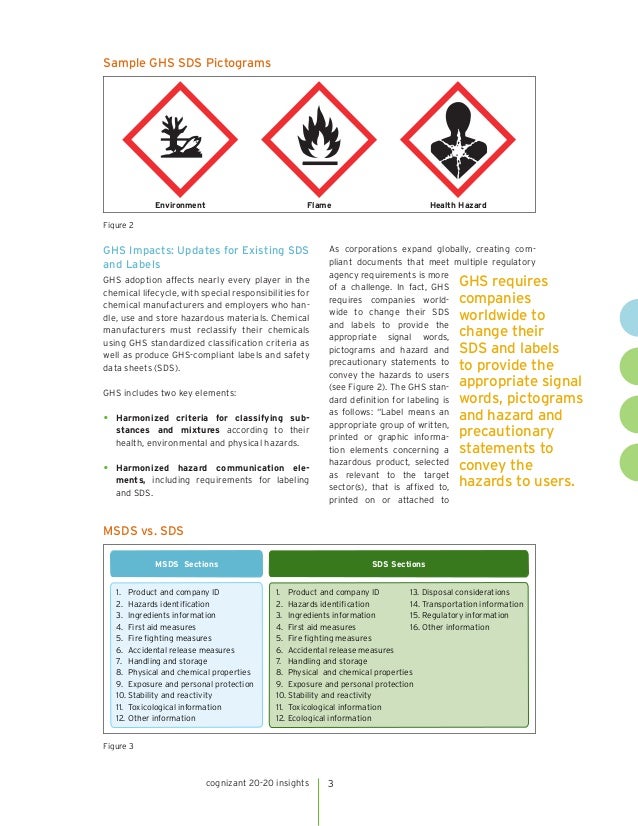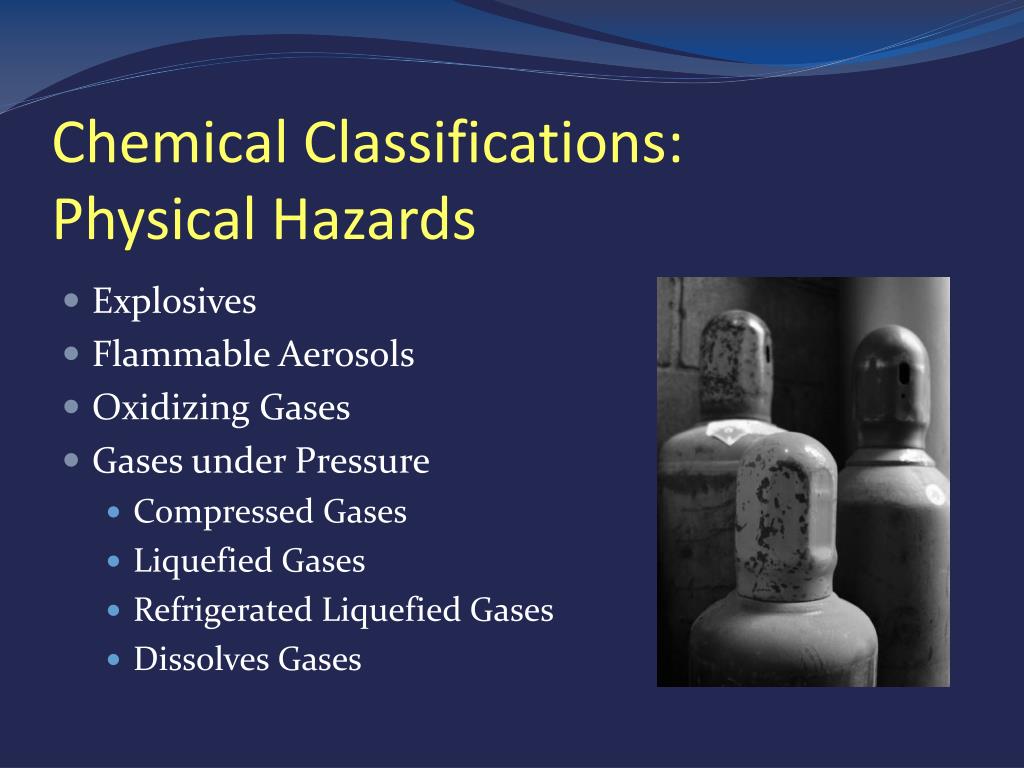38 labels under hazard communication are standardized and harmonized
HazCom 2012: The GHS label requirements The GHS is a system for standardizing how chemicals are labeled and classified across the globe. It provides a standardized way to determine how hazardous chemicals can affect health and safety. The GHS is intended to improve understanding of hazards and lead to better handling and use of chemicals in the workplace. Required GHS label elements OSHA's Revised Hazard Communication Standard - Grainger ... Actual label design and layout may vary. Product Identifier Must match the product identifier used on the Safety Data Sheets. Signal Word Indicates the relative level of the hazard's severity. "Danger" and "Warning" are the two signal words. Pictograms Graphics intended to convey specific hazard information. Hazard Statements
GHS: The Globally Harmonized System for Labeling [Updated ... The Globally Harmonized System, also known as GHS, is a standard that has been adopted by companies, governments, universities and other institutions around the world. Recently aligned with OSHA's Hazard Communication Standard, the newly combined GHS and HCS system is focused on creating a consistent way of classifying chemical hazards.

Labels under hazard communication are standardized and harmonized
GHS Label Requirements, Symbols, and Classifications ... Hazard statements, (like all things GHS) are standardized and are selected by the chemical manufacturer based on the classification of the chemical.Each hazard statement has a code, which begins with the letter H and is followed by three digits. According to the HCS, only the hazard statement phrase is required for labeling. PDF Hazard Communication Standard for In GHS Format Standard label elements are assigned for each GHS hazard classiicaion and category. These include the signal words, picto - grams, standardized hazard statements and standardized precauionary statements, as well as the product ideniier, product name, and contact informaion for the responsible party. PDF Fact Sheet on Globally Harmonized System for ... A label on a chemical container in a work area provides the most immediate source of information about the hazards of a chemical. The requirements for workplace labels are identified in OSHA's HCS, 29 CFR 1910.1200(f)(6). The current version is HCS 2012. Two labeling systems will be discussed in this Information Sheet: Standard and Alternative.
Labels under hazard communication are standardized and harmonized. PDF Labels Under the Texas Hazard Communication Act System (GHS) is an international approach to hazard communication, providing agreed criteria for classification of chemical hazards, and a standardized approach to label elements and safety data sheets. As of December 1, 2015, all labels provided by the manufacturers or distributors of hazardous chemicals will be required to be GHS compliant ... PDF Hazard Communication Standard: Labels and Pictograms labeling requirements as a part of its recent revision of the Hazard Communication Standard, 29 CFR 1910.1200 (HCS), bringing it into alignment with the United Nations' Globally Harmonized System of Classification and Labelling of Chemicals (GHS). These changes will help ensure improved quality and consistency in the classification and labeling Facts on Aligning the Hazard Communication Standard to the ... Under the GHS, labels would include signal words, pictograms, and hazard and precautionary statements and safety data sheets would have standardized format. This system was agreed on at an international level by governments, industry, and labor, and adopted by the UN in 2002 with a goal of 2008 for implementation. FAQs on Hazard Communication Standard, GHS Labels, Safety ... The Hazard Communication Standard (HCS) is now aligned with the Globally Harmonized System of Classification and Labeling of Chemicals (GHS), improving the quality and consistency of hazard information in the workplace, making it safer for workers by providing easily understandable information on appropriate handling and safe use of hazardous chemicals, as well as harmonizing U.S. hazard ...
GHS pictograms | UNECE For hazard communication elements (labels and marks) applicable to other transport classes or transport conditions covered by transport of dangerous goods regulations but not addressed in the GHS (e.g. labels for classes 7 and 9; elevated temperature substance mark; lithium battery mark; etc) refer to Part 5 of the United Nations Recommendations on the Transport of Dangerous … Hazard Communication - Container Labeling - OSHAcademy ... The HCS 2012 requires Globally Harmonization System (GHS) pictograms on labels to alert users of the chemical hazards to which they may be exposed. Each pictogram consists of a symbol on a white background framed within a red border and represents a distinct hazard(s). The pictogram on the label is determined by the chemical hazard classification. 1910.1200 - Hazard Communication. | Occupational Safety ... this occupational safety and health standard is intended to address comprehensively the issue of classifying the potential hazards of chemicals, and communicating information concerning hazards and appropriate protective measures to employees, and to preempt any legislative or regulatory enactments of a state, or political subdivision of a state, … PDF Hazard Communication and the Globally Harmonized System (GHS) the Globally Harmonized System (GHS) of classification and labeling of chemicals. The key changes in the Hazard Communication Standard affect both chemical suppliers (manufacturers, importers, distributors) and employers whose employees may be exposed to hazardous chemicals. GHS is an international approach that standardizes chemical hazard ...
GHS or DOT—Which Label Should You Use ... - EHS Daily Advisor The Hazard Communication Standard (HCS) requires pictograms on labels to alert users of the chemical hazards to which they may be exposed. Each pictogram consists of a symbol on a white background framed within a red border and represents a distinct hazard(s). The pictogram on the label is determined by the chemical hazard classification. Intro to Hazard Communication, Part Three: Labeling ... That's why the HazCom standard includes strict labeling requirements, and it's also why OSHA opted to revisit and improve those requirements by aligning with the Globally Harmonized System (GHS) in 2012. With that context in mind, let's continue your HazCom journey by taking a look at the nuances of labeling under the HazCom standard. GHS (Rev.8) (2019) | UNECE guidance on the identification of dust explosion hazards and the need for risk assessment, prevention, mitigation, and hazard communication. The eighth revised edition of the GHS takes account of these amendments which were circulated as document ST/SG/AC.10/46/Add.3 . Health Hazards in Construction Flashcards | Quizlet OSHA's Hazard Communication Standard (HazCom) is designed to ensure that information about _____ and associated protective measures is disseminated. Hazardous chemicals. Chemical manufacturers and importers must convey the hazard information they learn from their evaluations to downstream employers by means of labels on containers and:
Hazard Communication - Globally Harmonized System ... In 2003, the United Nations (UN) adopted the Globally Harmonized System of Classification and Labeling of Chemicals (GHS). The GHS includes criteria for the classification of health, physical and environmental hazards, as well as specifying what information should be included on labels of hazardous chemicals as well as safety data sheets.
Hazard Communication - Overview | Occupational Safety and ... The Hazard Communication Standard (HCS) is now aligned with the Globally Harmonized System of Classification and Labeling of Chemicals (GHS). This update to the Hazard Communication Standard (HCS) will provide a common and coherent approach to classifying chemicals and communicating hazard information on labels and safety data sheets.

PPT - Hazard Communication Training Program (including GHS revisions) PowerPoint Presentation ...
OSHA Hazard Communication Standard | Research Support OSHA revised its Haz Com Standard to align with the United Nations, Globally Harmonized System of Classification and Labeling of Chemicals (GHS). These changes were made according to the chart to the right. The purpose of this document is to familiarize you with what to expect, when to expect it, and describe these label elements. June 1, 2015*.
BRIEF - Occupational Safety and Health Administration To develop labels under the revised HCS, manufacturers, importers and distributors must first identify and classify the chemical hazard(s). Appendices A, B, and C are all mandatory. The classification criteria for health hazards are in Appendix A and the criteria for physical hazards are presented in Appendix B of the revised Hazard Communication
Hazard Communication Standard The Hazard Communication Standard (HCS) is now aligned with the Globally Harmonized System of Classification and Labeling of Chemicals (GHS). This update to the Hazard Communication Standard (HCS) will provide a common and coherent approach to classifying chemicals and communicating hazard information on labels and safety data sheets.
Who Has Hazard Communication Duties? - OSHA.com OSHA's Hazard Communication Standard (often shortened to HazCom or HCS) has a very general name but a very specific purpose - keeping people safe by ensuring they get information on hazardous chemicals they may be exposed to in the workplace. The complete and current version of OSHA's HCS can be found under 29 CFR 1910.1200.
What are the 6 Elements of a GHS Label? - Computype 1. Product Identifier/Ingredient Disclosure This component of the GHS label is typically placed in the top left-hand corner of the label, and it identifies the hazardous chemical or ingredient that is in this product. It can state the name, code number, or batch number. This allows for the chemical to be confidently identified. 2. Signal Word




Post a Comment for "38 labels under hazard communication are standardized and harmonized"